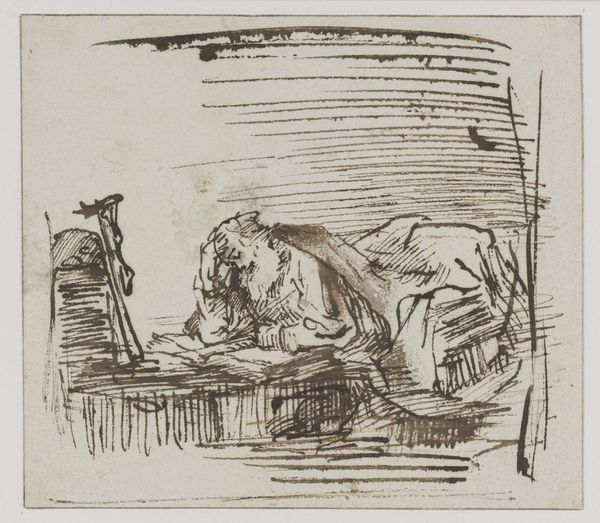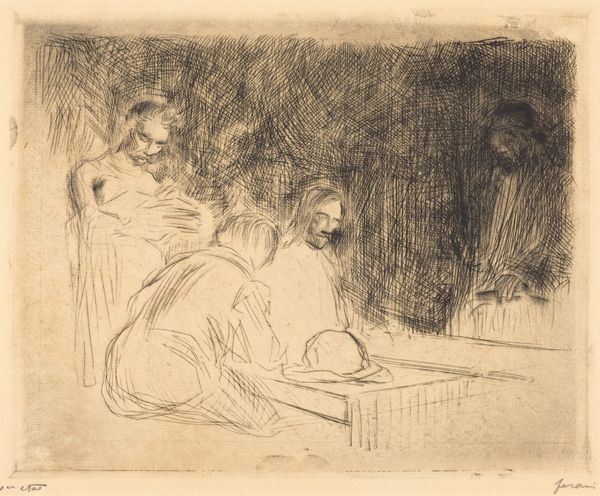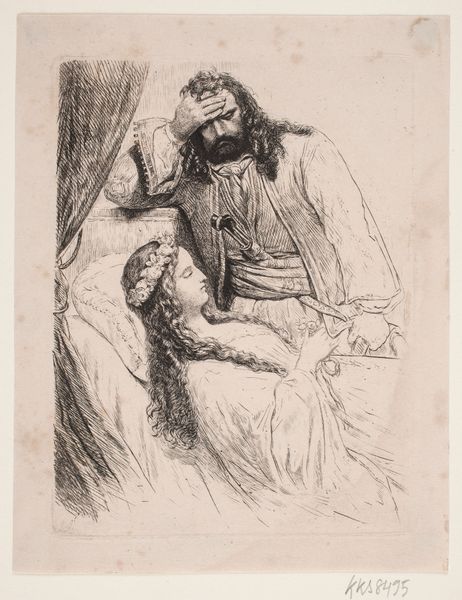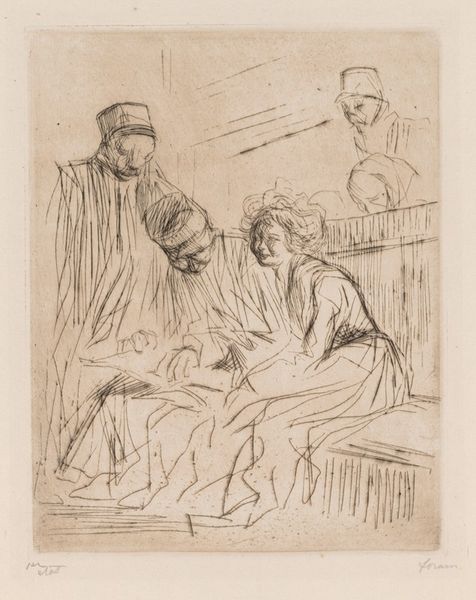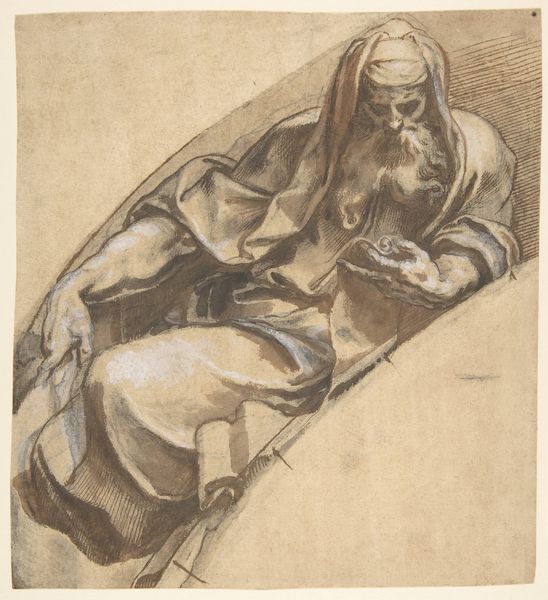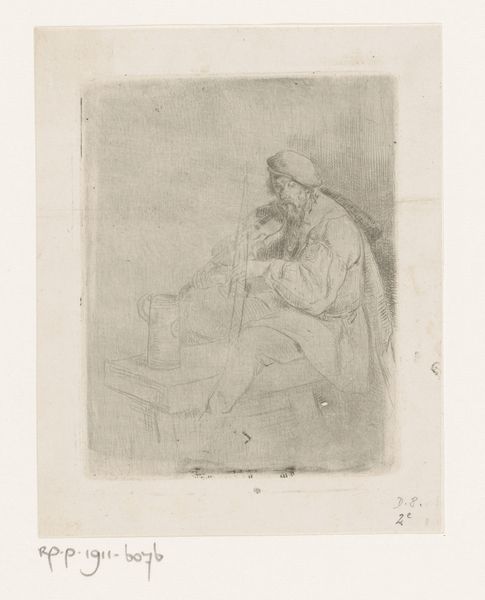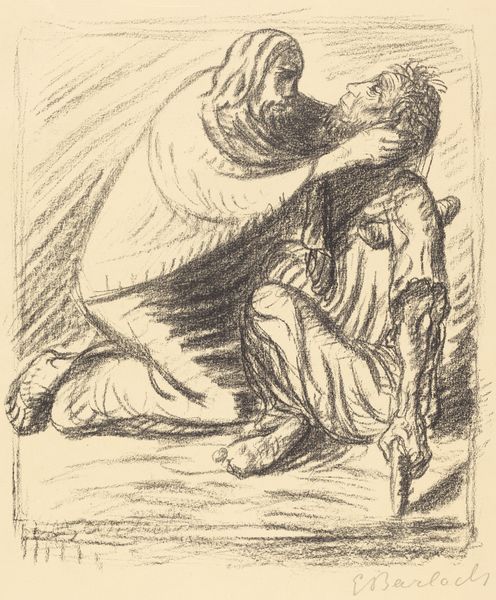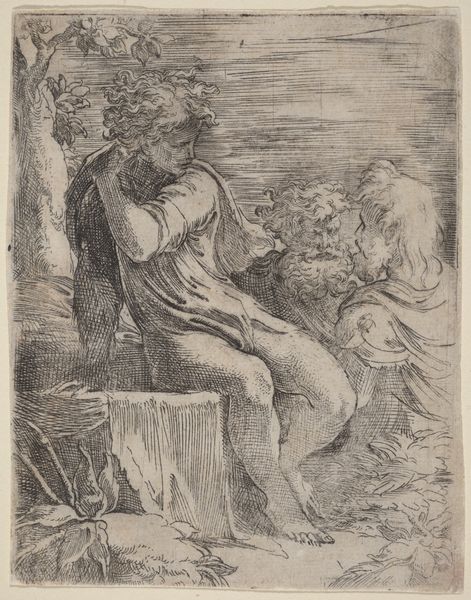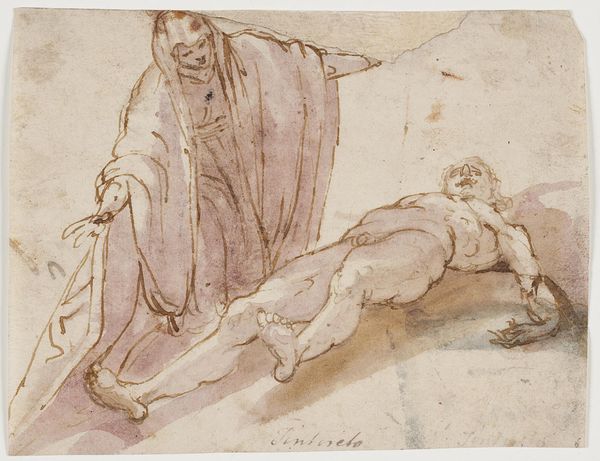
drawing, ink, pen
#
drawing
#
toned paper
#
light pencil work
#
ink drawing
#
narrative-art
#
baroque
#
pen sketch
#
figuration
#
personal sketchbook
#
ink
#
ink drawing experimentation
#
pen-ink sketch
#
sketchbook drawing
#
pen
#
history-painting
#
storyboard and sketchbook work
#
sketchbook art
Dimensions: height 88 mm, width 118 mm
Copyright: Rijks Museum: Open Domain
Editor: Here we have an ink drawing, "Temptation of Christ," created after 1650 by an anonymous artist. It’s done on toned paper, and the light pencil work gives it an almost ethereal feel. I'm intrigued by its intimate scale and the way the artist captured a moment of contemplation. What stands out to you when you look at this drawing? Curator: The immediate draw is in its linework and composition, isn't it? Observe how the artist uses hatching to model form, particularly in the drapery and figure. It suggests an engagement with the established vocabulary of Baroque art. But what kind of statement can be found in a personal sketchbook drawing as opposed to the scale of the monumental? The emphasis is in a sense in artistic processes of construction. Editor: I see that hatching technique now that you mention it. The direction and density definitely contribute to the modeling, giving the figure depth despite the limited medium. So it is not as much about its grand symbolic nature, and instead a study in constructing something tangible? Curator: Precisely. One can appreciate the semiotic structure as being in the relationship between surface and illusion, line and form. It highlights an interest in exploring the properties of the material and the method rather than solely conveying a narrative message. What sort of message does that give us? Editor: It is a much less codified sense of drawing—experimentation almost for the sake of experimentation, which is not the message often found in Baroque art. Curator: Exactly. Consider this: does it reveal that "finishedness" in itself can represent another level of signifying within an image? Editor: Absolutely. By not being overly concerned with perfection, the work becomes an authentic glimpse into an artistic process rather than a demonstration of masterful ability alone. Thanks, I definitely see the layers there now, both literal and figurative! Curator: And by understanding the visual vocabulary, the materiality, we uncover these dimensions—that's the excitement for me.
Comments
No comments
Be the first to comment and join the conversation on the ultimate creative platform.
